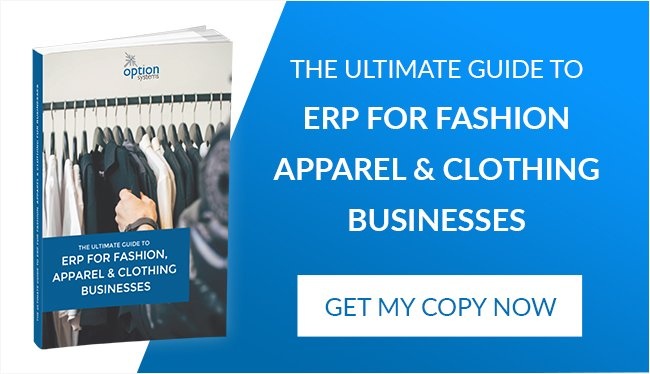.jpg?width=1920&name=david-dvoracek-12P0_rzSNpM-unsplash%20(1).jpg)
In our approach to ERP development, we’ve taken the best features from the ‘big 5’ ERPs to create a platform that’s driven by processes. A process-driven ERP has a range of core functions that are seamlessly integrated with third-party and legacy applications in a modular framework. Being built for purpose, its functions are tailored to address the supply, demand, and resource planning needs of a specific sector – in the case of STYLEman, the apparel sector. This streamlines the software to focus on the best solutions for each aspect of the supply chain, avoiding the problem many users have with redundant features and capacity in the large generic ERPs (that you still have to pay for).
The result is a flexible, cost-effective platform that sits comfortably with your organisational goals, budget, desired outcomes, and planning requirements. With no need for extensive modifications, you can manage implementation and training on a faster timeframe, and start seeing the benefits of STYLEman in action.
At the same time, our support and development team – having direct experience within the apparel sector – are better placed to help you than many of the tech support staff at the large vendors. They are more likely to have an intuitive grasp of any difficulties you come across, and adjustments to the software will be easier to make.
The Perfect Fit: STYLEman ERP
STYLEman comes with distinct advantages over both the large generic ERP suites and the independent platforms – providing better value, greater relevance, and greater efficiency. In the sections below, we discuss the ways in which STYLEman is different – and why these differences matter.
STYLEman Vs The Large ERP Suites
The big ERP suites are data-oriented systems that create standardised processes from a feed database, establishing a modular architecture that integrates a wide range of business systems. This is what makes them applicable to many different sectors. In theory, you simply swap out the database and you’re good to go. However, this emphasis on standardisation, and on broad-brush applicability, can make the systems inflexible and expensive to customise in the face of niche business requirements.
STYLEman Vs Independent ERPs
The uncomfortable fact is that many sectors have specific functions individual to those industries. In the clothing sector, for instance, there is the difficulty of incorporating size, colour, and seasonal variations within individual product lines, without creating multiple records. To overcome this, some independent ERP developers took the focus away from the data and placed it on the functions that the ERP was designed to perform.
This function-driven strategy created highly specialised software platforms that worked well in addressing specific needs. Unfortunately, they often struggle integrating with third-party apps and data formats and are difficult to update as circumstances change – leading to rapid obsolescence.
Request A Free STYLEman Software Trial And Demonstration
Investing in an ERP is an important decision, and it’s smart to weigh up the pros and cons of different vendors. We’d like to invite you to undertake a proof of concept with STYLEman as part of your consideration process, so you can see how it works compared with other ERPs and assess the benefits for yourself. To discuss this in more detail, or request more information, please give us a call today.
Image source: Unsplash


